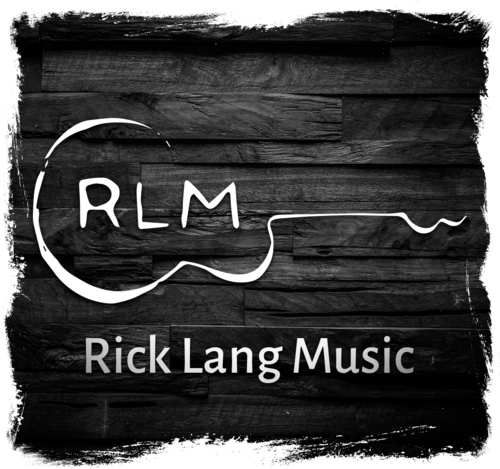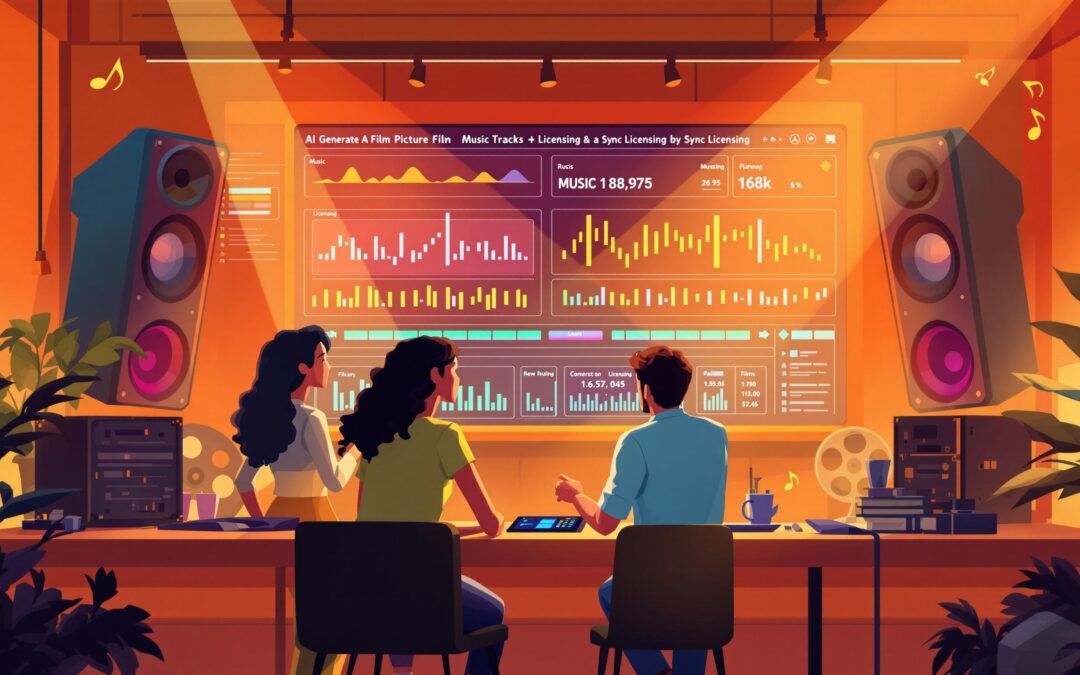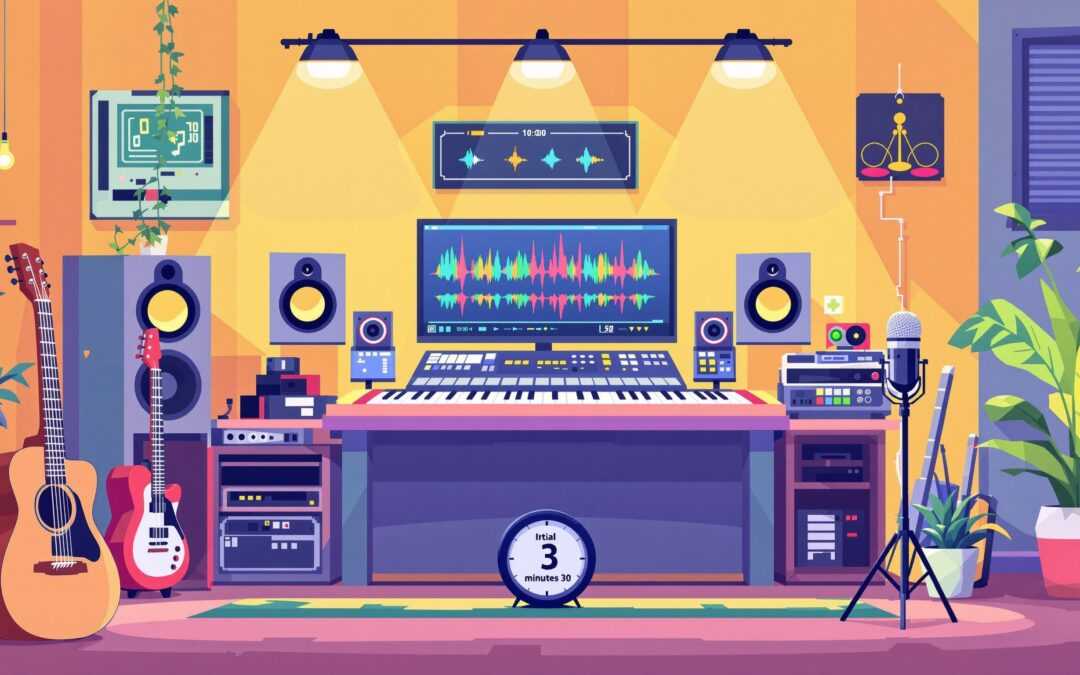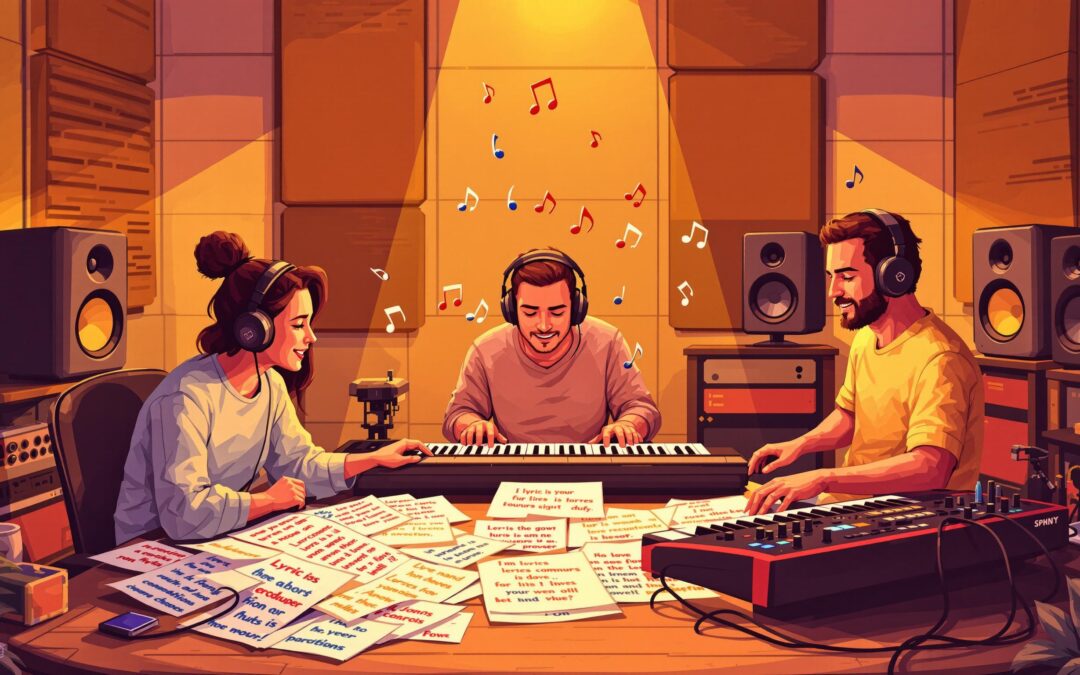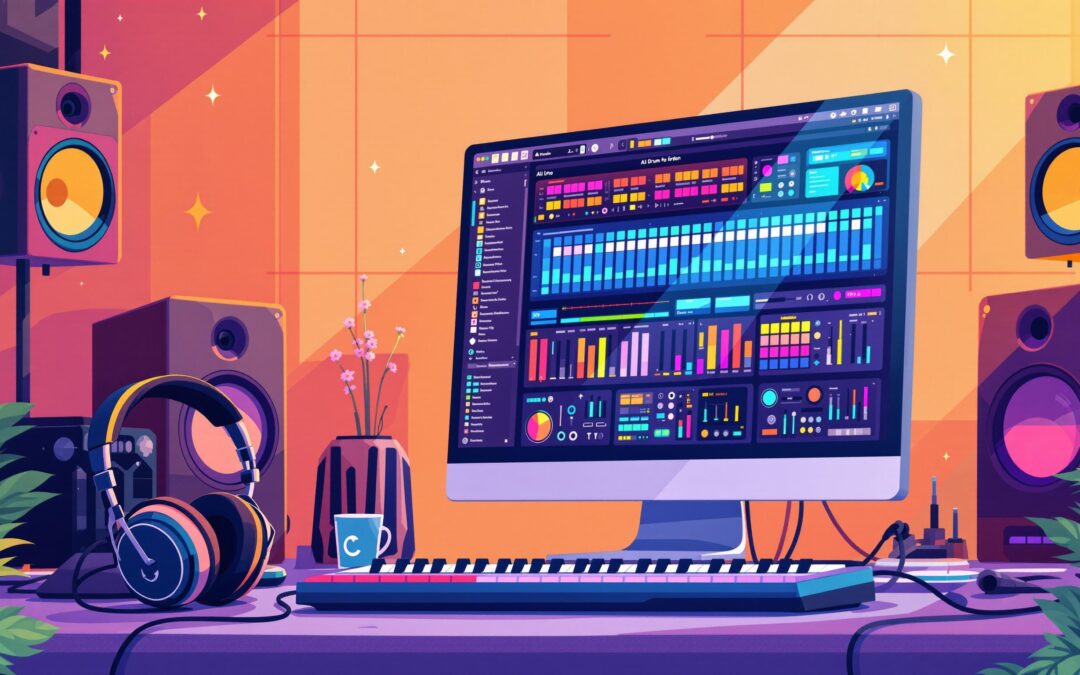Want to build a strong songwriting partnership? Here’s what you need to know:
- Find the right partner: Look for someone with similar creative goals, work habits, and communication styles.
- Set clear goals: Define roles, time commitments, and success metrics upfront.
- Use tools wisely: Leverage DAWs, cloud storage, and project management apps to stay organized.
- Communicate openly: Regular check-ins, constructive feedback, and meeting deadlines build trust.
- Protect your rights: Document song splits, royalties, and publishing terms to avoid disputes.
Starting Your Co-Writing Partnership
Choosing a Compatible Writing Partner
Finding the right co-writer is crucial for a successful collaboration. Look for someone who shares your creative vision, work habits, and communication style. When evaluating potential partners, consider:
- Their track record of finishing projects
- Willingness to compromise and work collaboratively
- Ability to meet deadlines consistently
- Musical influences and style preferences
Once you find the right fit, prioritize building trust and establishing clear communication.
Building Trust and Communication
Strong partnerships rely on open communication and mutual respect. Be upfront about your creative process, strengths, and limitations to set the foundation for a healthy collaboration.
Here are some ways to build trust effectively:
- Regular Check-ins: Set up weekly or bi-weekly meetings to discuss progress, address challenges, and align on creative direction. This helps avoid misunderstandings and keeps both of you on the same page.
- Constructive Feedback: Share feedback that’s specific and respectful. For instance, say, "The bridge could use a stronger melody", instead of vague or negative comments like, "I don’t like the bridge."
- Reliable Follow-through: Stick to your commitments and deadlines. If something comes up and you can’t meet a deadline, communicate early and suggest alternatives.
Defining Partnership Goals
Clear goals are essential to guide your collaboration and avoid potential conflicts. Start by outlining a shared vision and expectations.
Consider drafting a simple agreement to cover key aspects like:
| Aspect | Details |
|---|---|
| Creative Goals | Genre, target audience, and release frequency |
| Time Commitment | Weekly writing sessions and project deadlines |
| Role Division | Who handles melody, lyrics, production, etc. |
| Success Metrics | Targets like streaming numbers, playlist inclusion, or licensing deals |
Set both short-term and long-term goals. For example, short-term goals might involve completing a certain number of songs each month, while long-term goals could focus on building a song catalog for specific markets or opportunities.
Setting Up Effective Writing Sessions
Planning Writing Sessions
Plan your writing sessions during times when you’re most productive and inspired. Focus on these key elements for smooth collaboration:
| Element | Description | Best Practice |
|---|---|---|
| Duration | How long the session lasts | Choose a length that matches your creative rhythm and include short breaks. |
| Frequency | How often you meet | Stick to a regular schedule that works for everyone involved. |
| Location | Physical or virtual meeting space | Pick a quiet, distraction-free spot for optimal focus. |
| Pre-session Prep | Preparation before the session | Share ideas, references, or outlines ahead of time for a productive start. |
These structured sessions help ensure everyone is on the same page and ready to contribute effectively.
Dividing Writing Tasks
Assign tasks based on each person’s strengths to make the most of your collaboration. Here’s an example breakdown:
Main Responsibilities:
- Assign melody creation to the partner with stronger musical composition skills.
- Let the more lyrically inclined writer handle the lyrics.
- Divide arrangement tasks based on instrumental expertise.
- Share production duties according to technical know-how.
Secondary Tasks:
- Research and gather references for inspiration.
- Organize demo recordings.
- Document progress during each session.
- Handle revisions and fine-tuning.
Clear task assignments like these keep the process organized and efficient, setting the stage for using the right tools.
Using Co-Writing Tools
Digital tools can make collaboration smoother and more efficient. Consider using:
- Digital audio workstations (DAWs) for recording and sharing music ideas.
- Cloud storage to organize and access song files anytime, anywhere.
- Project management platforms to track your progress and deadlines.
- Video conferencing software for remote writing sessions.
AI tools can also help you push through creative blocks, but they shouldn’t replace human creativity. Set up a shared digital workspace to keep all song materials in one place, ensuring both partners stay aligned.
Solving Common Co-Writing Problems
Handling Different Writing Styles
When co-writers bring different writing styles to the table, it can feel challenging – but it’s also a chance to create something unique. Start by identifying the strengths of each approach, whether it’s a simpler, minimalist style or a more elaborate, layered one. Look for elements in each that amplify the emotional impact of your work. Then, combine those strengths in a way that complements the overall piece. Since creative preferences can shift over time, staying flexible and open to change is key.
Managing Partnership Changes
Changes in priorities or life circumstances can impact your partnership. Here’s how to navigate them effectively:
- Schedule regular check-ins to ensure your goals are still aligned and address any new expectations.
- Adjust roles as needed, clearly redefining responsibilities when situations evolve.
- Set up specific times and channels to discuss changes. Open and honest communication is essential for staying on the same page and refining your shared vision.
Partnerships thrive when they’re allowed to grow and adapt. By staying open to new ideas, maintaining clear communication, and revisiting your goals regularly, you can keep your co-writing relationship productive and fulfilling.
sbb-itb-1c6af30
How to Co-write Songs Successfully. Tips for Collaborating on …
Business and Legal Requirements
Once you’ve streamlined creative collaboration, it’s time to lock down your legal and financial arrangements.
Song Rights and Royalties
Make sure to document how the rights and royalties are divided among contributors.
Keep track of session details:
- Contributions to melody, lyrics, and arrangement
- Dates of creation
- Any revisions or updates
Prepare a split sheet that includes:
- Writers’ names and contact details
- Percentage ownership for each contributor
- PRO (Performing Rights Organization) affiliations
- Publishing information
Publishing Rights
Establish clear guidelines for how the song can be used and licensed.
Key elements to address:
- Permissions for sync licensing (e.g., film, TV)
- Approvals for cover versions
- Processes for clearing samples
- Any territory-specific restrictions
Income Sharing
Avoid conflicts by agreeing on how income will be split.
| Income Type | What It Covers | Typical Split Arrangement |
|---|---|---|
| Performance Royalties | Radio, streaming, live performances | Based on ownership percentage |
| Mechanical Royalties | Physical sales, downloads | Same as performance split |
| Sync Licensing | Film, TV, advertising usage | Decided by the partnership agreement |
| Live Performance | Writer’s share of performance income | According to PRO registration |
Important Details: Specify accounting periods, payment methods, and how disputes will be resolved in writing.
Building Strong Co-Writing Partnerships
Creating long-lasting co-writing partnerships involves a mix of creative connection and professional organization. From the experiences of seasoned songwriters, the key ingredients for success include trust, open communication, and clearly outlined agreements.
Here’s what makes these partnerships work:
- Respect for each other’s creativity: Acknowledge and value each person’s unique contributions.
- Shared artistic vision: Ensure goals align to produce cohesive work.
- Written agreements: Cover both creative roles and financial arrangements upfront.
- Adaptability: Be open to changes as the partnership develops.
The best partnerships strike a balance between artistic freedom and professional discipline. By combining a strong creative connection with clear agreements and financial understanding, you set the stage for a sustainable collaboration.
Once the basics are in place, focus on these areas to keep the partnership thriving:
- Creative Trust: Keep communication open to ensure artistic ideas flow freely.
- Professional Records: Track contributions carefully to avoid disputes later.
- Financial Transparency: Clearly document how earnings will be shared.
- Continuous Improvement: Regularly assess and improve how you work together.
The strongest co-writing teams treat the process as both an art form and a professional endeavor, blending creativity with structure to ensure ongoing success.

